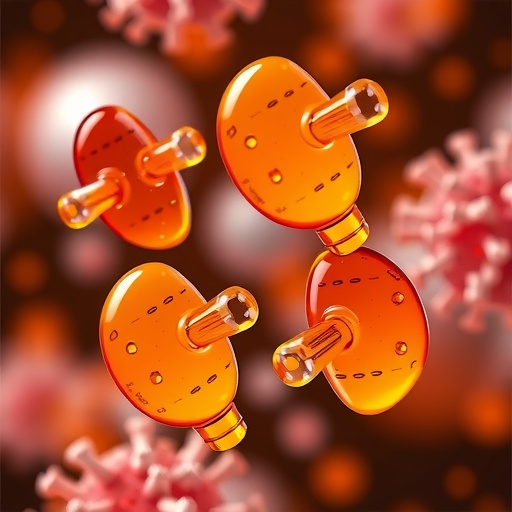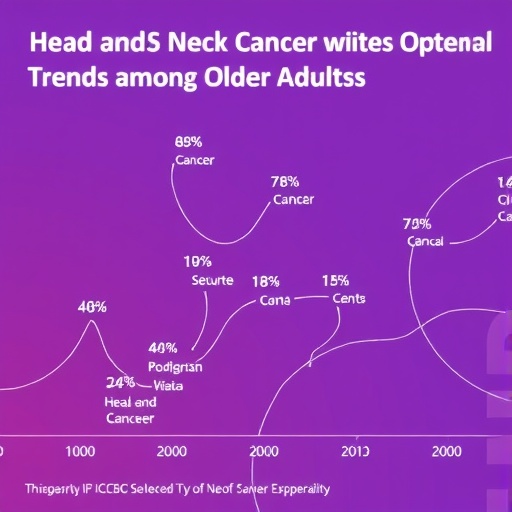In recent years, the United States has witnessed a surge in measles outbreaks, raising public health concerns and igniting interest in various preventive measures. Among these, Vitamin A has emerged as a topic of notable significance due to its established role in enhancing immune function and combating infectious diseases. The relationship between Vitamin A supplementation and the prevention of measles infections, along with its impact on public awareness and health practices, has become increasingly relevant, especially during these outbreaks. A new study sheds light on how public interest in Vitamin A has fluctuated in response to the rising incidence of measles, revealing significant insights into the intersection of nutrition, public health initiatives, and community engagement.
Measles, known for its highly contagious nature, can lead to severe complications, especially in children. The World Health Organization (WHO) has maintained that vaccination is the primary means of preventing measles outbreaks. Despite the availability of effective vaccines, misinformation and vaccine hesitancy have contributed to the decline of vaccination rates in some communities, leading to a resurgence of this preventable disease. The resurgence poses not only a threat to individual health but to public health as a whole, emphasizing the necessity for a deeper exploration into possible complementary measures, such as nutritional support through Vitamin A.
Vitamin A plays a crucial role in the function of the immune system, particularly in its ability to enhance the body’s response to infections. Studies have shown that Vitamin A deficiency can compromise immune response, making individuals more susceptible to infectious diseases, including measles. As public health officials grapple with growing measles cases, there is an undeniable urgency to investigate how Vitamin A could potentially serve as a supplement during outbreaks, particularly for those already at risk. Given its importance, understanding public interest in this nutrient is key, as it could influence health campaigns and community education efforts.
The recent study conducted by Bohler and colleagues reveals a marked increase in public inquiries and discussions surrounding Vitamin A during recent measles outbreaks in the U.S. Researchers accessed various platforms, including social media, healthcare forums, and search engine queries to analyze shifts in public awareness and concern. The data indicated a compelling correlation between rising measles case numbers and heightened interest in Vitamin A, suggesting that when faced with outbreaks, communities often turn to nutritional solutions as adjuncts to medical interventions.
What stands out in this research is not merely the increase in interest but the manner in which the information is disseminated and received. Social media platforms served as a double-edged sword, providing a space for public discussion while also transmitting misinformation regarding Vitamin A and its effects on measles. This phenomenon emphasizes the critical role that accurate information plays in guiding public behavior and health decisions. With Vitamin A supplementation being supported by evidence for its role in immune enhancement, the challenge remains to distinguish factual information from unverified claims.
Additionally, the research noted demographic differences in awareness levels regarding Vitamin A. While parents of young children exhibited heightened concern, older adults and less informed communities showed limited understanding of Vitamin A’s benefits. These variations suggest that health messaging should be tailored to specific populations, highlighting the necessity for targeted campaigns that focus on family health and prevention strategies during outbreaks. Understanding the demographics can empower public health initiatives to enhance community-specific messages that underline the importance of vaccination alongside nutritional support.
Furthermore, the implications of this study extend into policy-making and public health strategy. If public interest in Vitamin A is strong, health authorities might consider incorporating nutritional education and Vitamin A supplementation into existing vaccination programs. This could potentially enhance community trust and encourage proactive health behaviors, improving overall health outcomes in the face of emerging infectious diseases. Thus, the study not only presents critical data but also calls for a reevaluation of public health strategies in relation to nutritional interventions during times of crisis.
Another critical aspect of the research highlights how misinformation perpetuates public fear and misunderstanding regarding both measles and Vitamin A’s role in health. The proliferation of unverified claims about Vitamin A as a miracle cure for measles can lead to confusion and reluctance in seeking timely medical advice or vaccination. This scenario underscores the responsibility of health professionals and organizations to provide clear, science-backed information through various channels, ensuring that communities are not left vulnerable to misinformation.
Moreover, the study shines light on media’s role in shaping public perception. Coverage of measles outbreaks often emphasizes the urgency of vaccination without always contextualizing the potential benefits of nutritional support. As advocates for comprehensive public health approaches, it is essential that media narratives evolve to include discussions about Vitamin A, framing it as a useful adjunct to vaccination rather than a replacement. Improved media representation can empower the public with a well-rounded understanding of the multifaceted approach needed to mitigate measles outbreaks.
As we contemplate the future, the study opens avenues for further research on public interest in nutrition during other infectious outbreaks. Exploring the dynamics of how public perception shifts in response to health crises could offer deeper insights into optimizing public health strategies. Researchers are encouraged to investigate not only Vitamin A but also the roles of other micronutrients and immunological responses, paving the way for a holistic approach to managing infectious diseases in various populations.
In conclusion, the interplay between public interest in Vitamin A and the resurgence of measles in the United States emphasizes the necessity for informed, strategic health communication. As community interests evolve in response to outbreaks, health professionals must pivot alongside, reinforcing the importance of accurate information and highlighting the complementary roles of vaccination and nutrition in protecting public health. By cultivating an informed public equipped with knowledge about both preventative and supportive health measures, we can endeavor to close the gap in vaccination rates and ultimately safeguard our communities against preventable diseases.
Through this study, Bohler et al. bring to light a critical public health issue that transcends mere vaccination, advocating for an integrated approach involving community awareness, nutritional support, and clear communication strategies. With the rising incidence of infectious diseases, public health initiatives must adapt, leveraging robust data to inform policies and practices that ensure a health-literate populace ready to tackle the challenges of emerging health threats.
This research serves as a reminder of the interconnectedness of public health measures and the necessity for a unified, informed response in the face of infectious outbreaks. Without doubt, Vitamin A’s role during measles outbreaks provides a compelling case for reevaluating current health strategies and the urgent call for education in the nexus of nutrition and infectious disease prevention.
Subject of Research: Public interest in Vitamin A during measles outbreaks in the United States.
Article Title: Public Interest in Vitamin A During US Measles Outbreaks.
Article References:
Bohler, F., Pham, M.N., Burmeister, J.R. et al. Public Interest in Vitamin A During US Measles Outbreaks.
J GEN INTERN MED (2025). https://doi.org/10.1007/s11606-025-09928-2
Image Credits: AI Generated
DOI:
Keywords: Vitamin A, measles, public health, nutrition, vaccination, immune system.
Tags: children’s health and measles complicationscombating infectious diseases with Vitamin A.community engagement in health initiativesimmune function and infectious diseasesimportance of preventive health measuresmeasles vaccination rates declinenutrition’s role in public healthpublic awareness of Vitamin A benefitspublic health initiatives and nutritionUS measles outbreaks and public healthvaccine hesitancy and misinformationVitamin A supplementation for measles prevention





